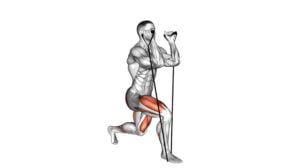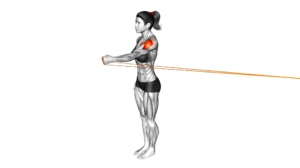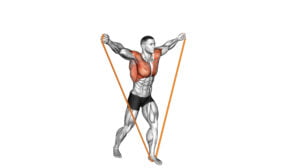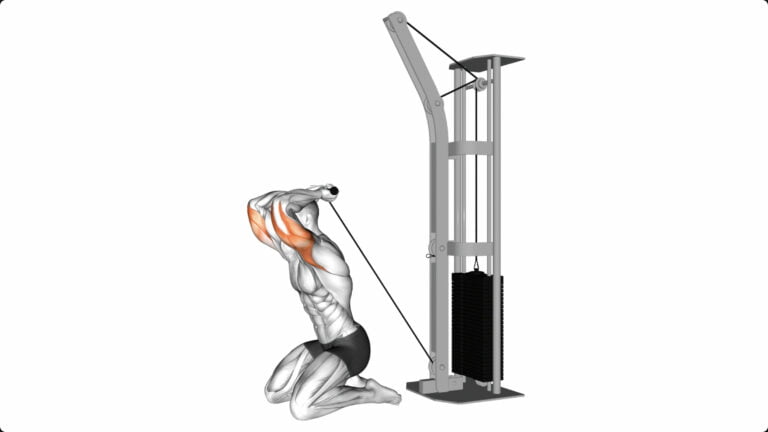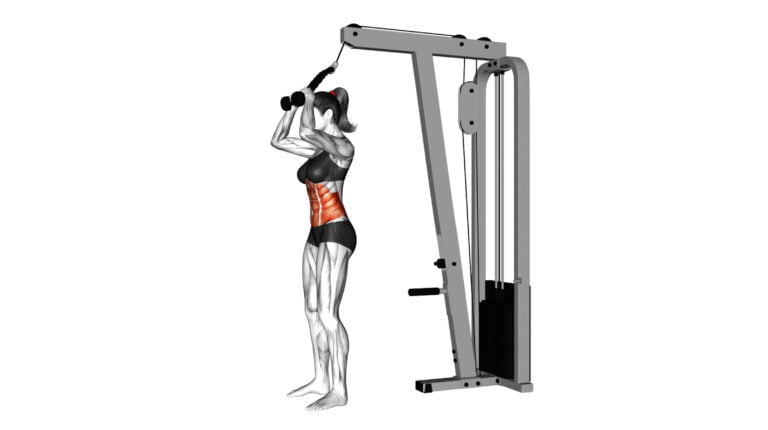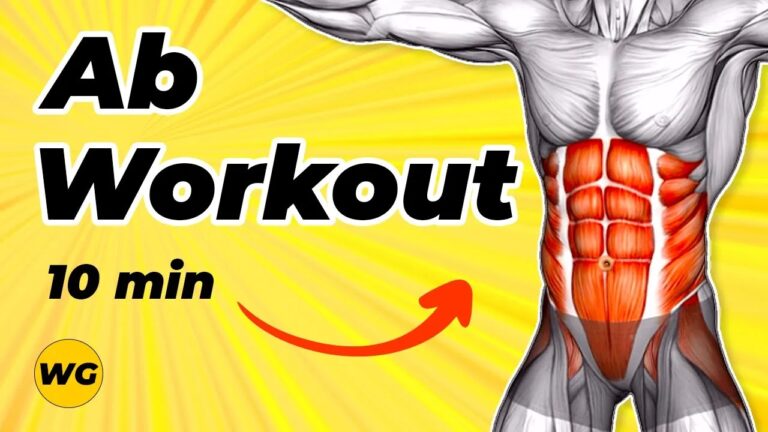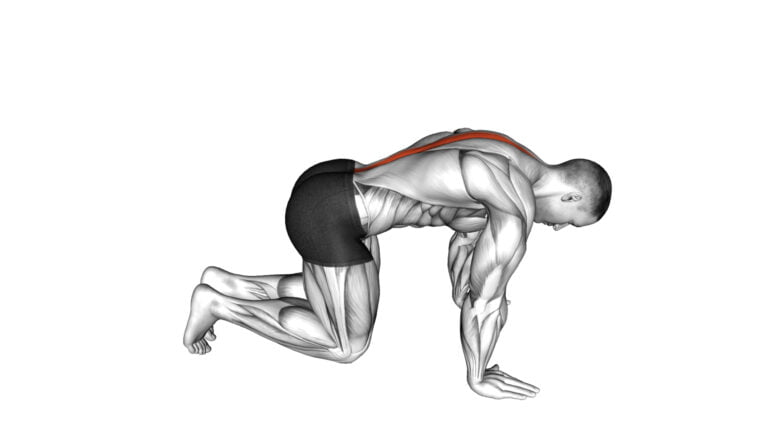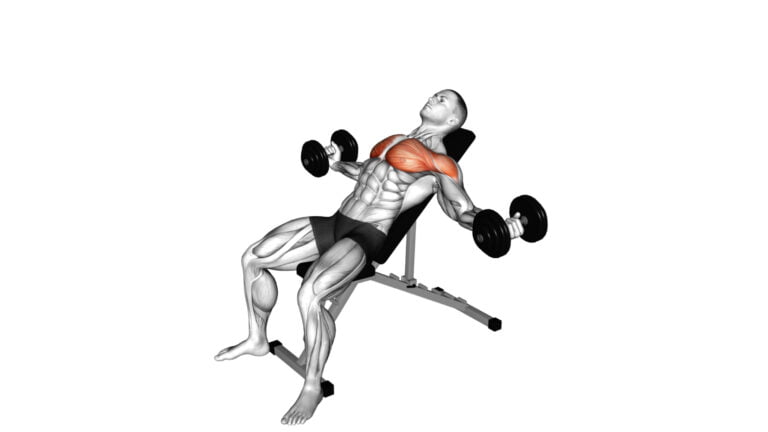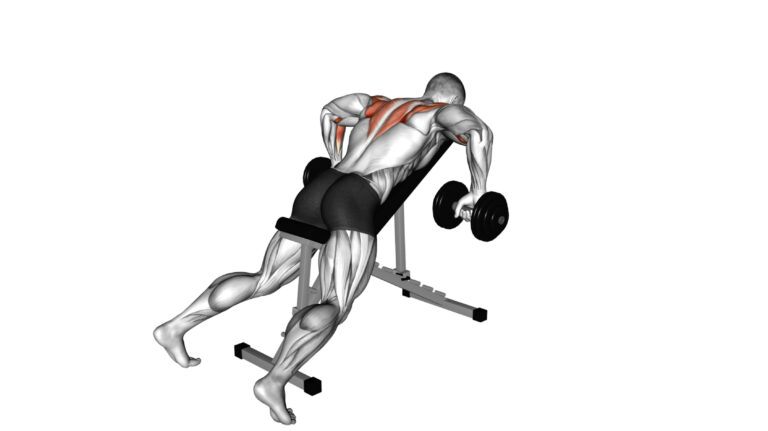10 Effective Back and Shoulder Exercises with Resistance Bands: A Complete Guide
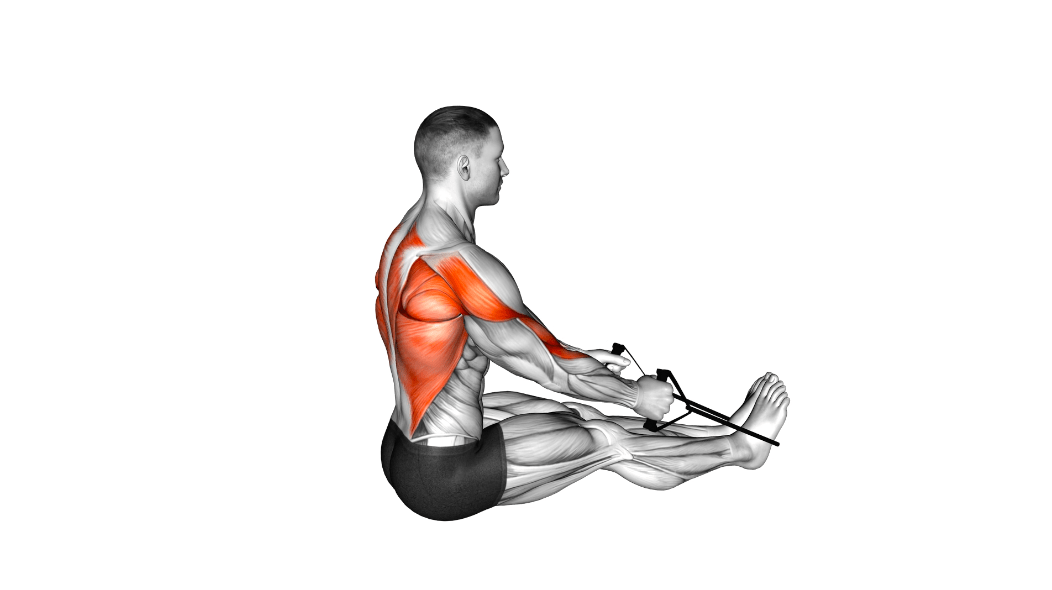
Welcome to your fitness journey with a twist! Resistance bands are not just stretchy loops; they’re your ticket to a stronger back and sculpted shoulders. It’s time to ditch expensive gym equipment and grab hold of these versatile workout buddies.
Whether you’re at home, in the park, or on-the-go, resistance bands offer an array of benefits for strengthening and toning upper body muscles.
Back and shoulder exercises with resistance bands can revolutionize your workouts by offering adjustable difficulty levels while sparing your joints from undue stress. No hefty weights or complex machines—just simple gear that packs a powerful punch for effective muscle building.
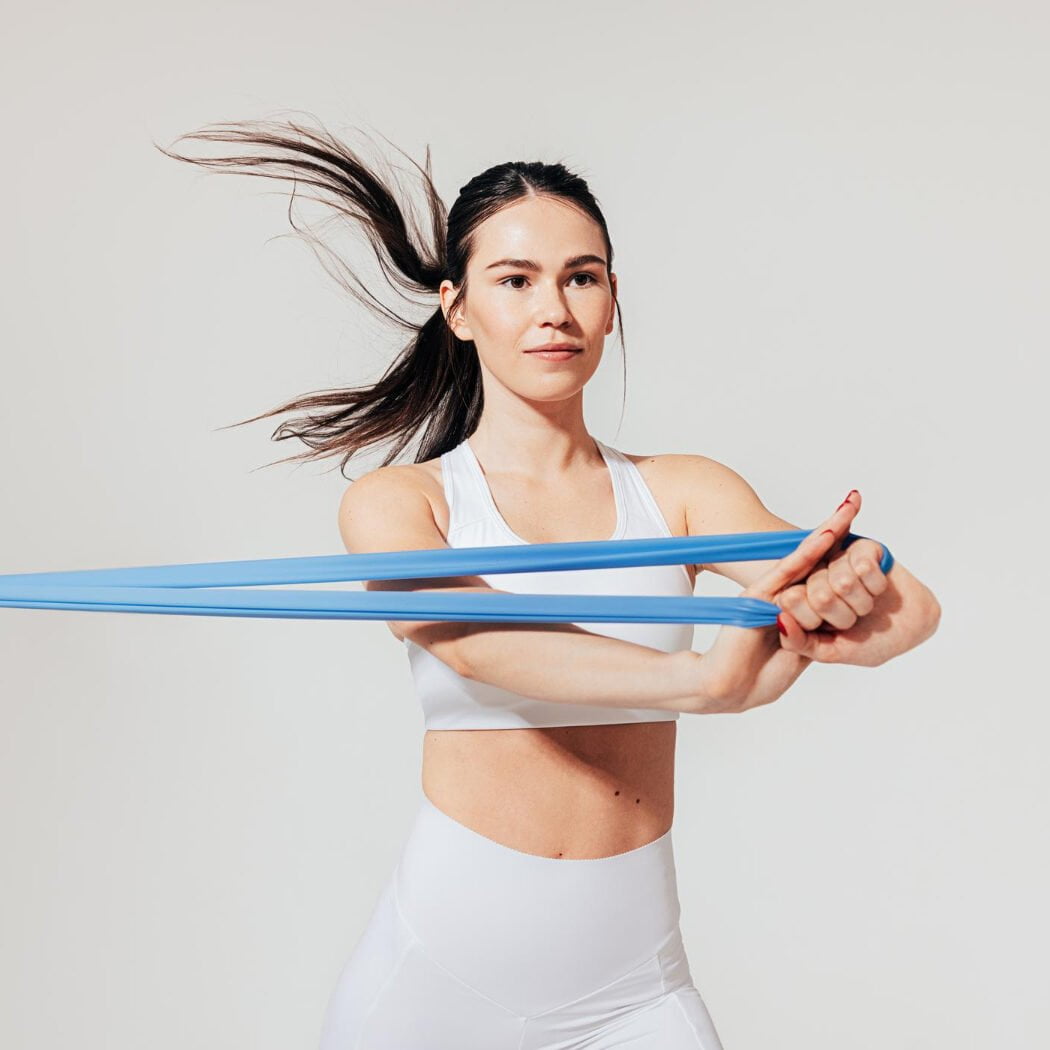
Perfect for anyone looking to enhance their physical health without breaking the bank.
In this guide, we’ll dive into 10 dynamic exercises specifically designed to target those back muscles and shoulders. Prepare yourself for clear instructions peppered with motivation galore—we’re all about getting you results that matter.
Let’s get moving toward better strength and mobility! Keep on reading—your perfect posture awaits!
Key Takeaways
- Resistance bands offer a low-impact, cost-effective way to strengthen back and shoulder muscles, making them an excellent choice for individuals at all fitness levels or those recovering from injuries.
- Exercises such as the Band Bent Over Row and Band Pull Apart target major muscle groups in the upper body, can be performed anywhere and easily adjusted for different fitness levels by changing band tension or grip.
- Proper technique is essential when using resistance bands; this includes maintaining good posture, controlling movement carefully, adjusting resistance accordingly, and breathing correctly to prevent injury while maximizing workout effectiveness.
- A sample workout routine using resistance bands should include 10-15 reps of each exercise with 2-3 sets per session and short rest periods between sets to build strength and endurance in the back and shoulders without overexertion.
- Incorporating these exercises into your existing training program will enhance overall upper body strength, improve muscle definition, support better posture, and contribute towards a more stable foundation for daily activities or other athletic endeavors.
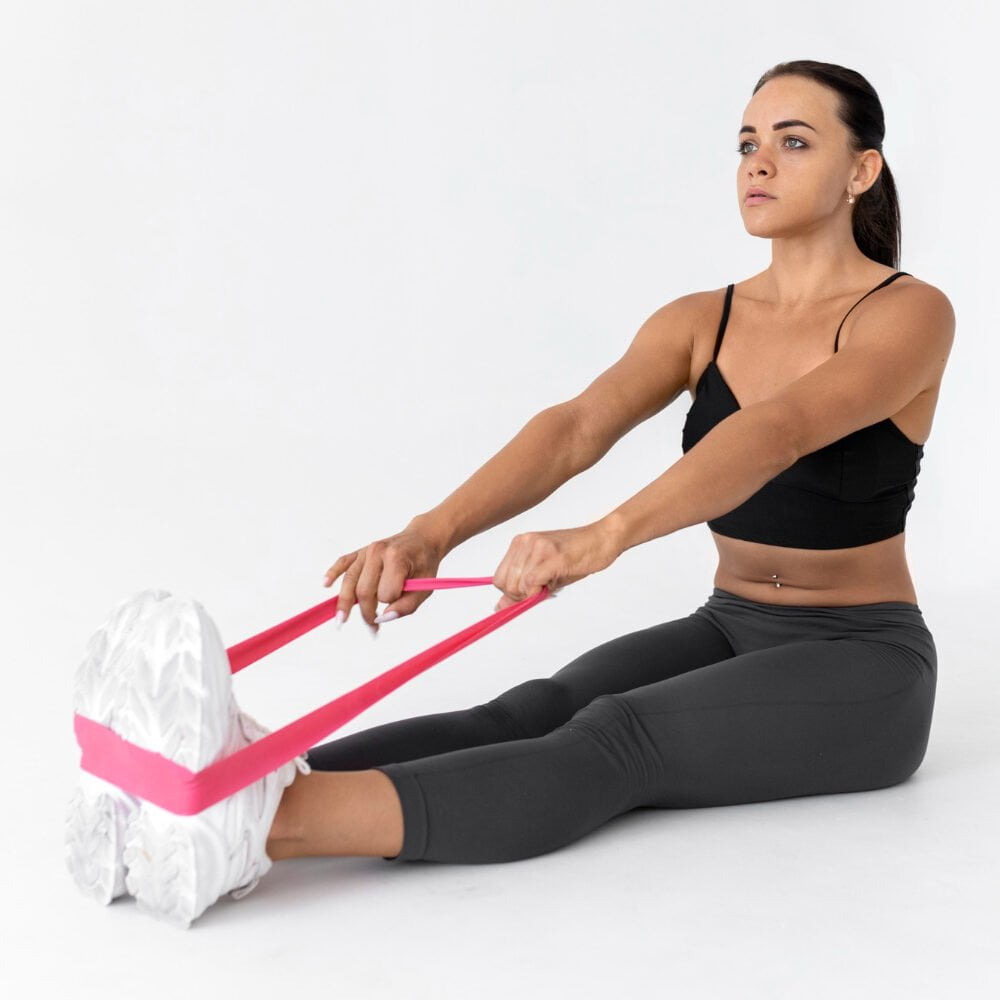
Benefits of Using Resistance Bands for Back and Shoulder Exercises
Resistance bands are a safe and low-impact way to strengthen your back and shoulder muscles, making them perfect for injury rehabilitation or prevention. They are also lightweight, portable, and cost-effective, allowing you to get a full workout anywhere.
Additionally, resistance bands can easily be adjusted to provide the right level of tension for each individual’s needs.
Safe and low impact
Exercising with resistance bands is a gentle way to strengthen muscles without putting too much strain on the joints. This approach is ideal for people of all fitness levels, especially those recovering from injuries or newcomers who need a more forgiving method to build their strength.
Unlike heavy weights that can be tough on your body, bands provide tension that’s easier to manage and adjust.
Your back and shoulders will thank you for using resistance bands as they help maintain joint health while effectively targeting muscle groups. You’ll still feel the burn and see progress, but without the risk of overexerting yourself which often comes with traditional weight lifting.
Embrace this safe alternative as part of your workout routine, knowing you’re taking care of your body while pushing towards your fitness goals.
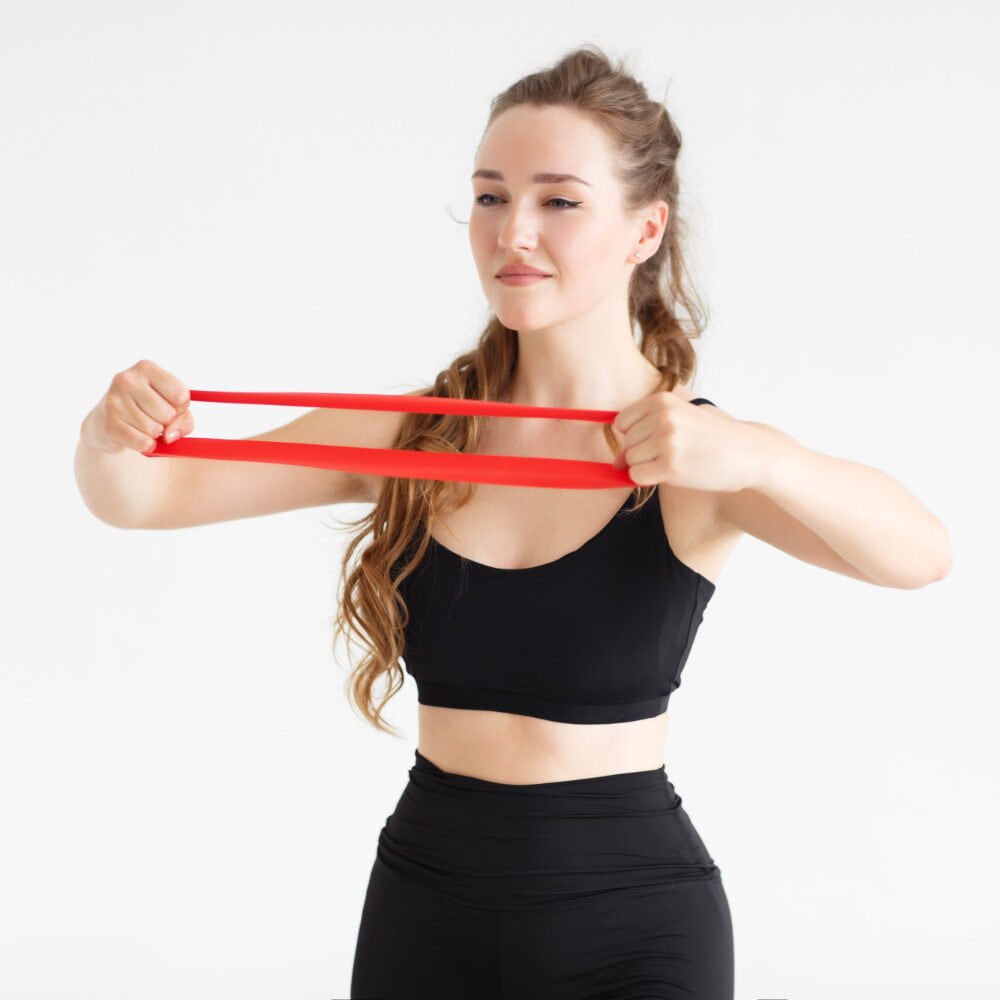
Portable and inexpensive
Resistance bands are a game changer for anyone who wants to build strength without breaking the bank or needing a dedicated gym space. Unlike bulky weight machines, these elastic wonders can fit into your bag and come along wherever life takes you.
They provide an affordable way to up your fitness game whether you’re at home, in the park, or on the road for work or vacation. You don’t need deep pockets to invest in a quality set of resistance bands; their low cost makes them accessible even if you’re on a tight budget.
Workouts with resistance bands can happen anywhere — no more excuses about not being able to make it to the gym! Transform any area into your own personal exercise zone by simply unpacking your bands and getting down to work.
Plus, swapping out weights for different levels of band resistance is as easy as grabbing another loop from your pack. This flexibility ensures that both beginners and seasoned athletes can challenge their muscles without having to purchase multiple sets of expensive equipment.
Easily modified to suit individual needs
Beyond being portable and cost-effective, resistance bands offer unparalleled adaptability for fitness enthusiasts of all levels. You can easily adjust the intensity of your workout by changing the band tension or switching to a different strength level.
Whether you’re a seasoned athlete or starting out, these versatile tools allow you to tailor each exercise to meet your specific goals and physical capabilities.
Tailoring exercises is straightforward: simply step further away from the anchor point to increase tension or move closer to lessen it. Resistance bands cater not just to your strength but also accommodate varying ranges of motion, making them ideal for those with mobility restrictions or recovering from injuries.
This customization ensures that back and shoulder workouts are effectively building muscle without straining joints – perfect for creating a balanced fitness routine personalized just for you.
10 Effective Resistance Band Exercises for Back and Shoulders
Get ready to strengthen your back and shoulders with these 10 resistance band exercises. From pulldowns to rows and shoulder presses, you’ll target all the major muscle groups in your upper body for a complete workout.
1. Resistance Band Cross Body Single Straight Arm Supinated Pulldown
To perform the resistance band cross body single straight arm supinated pulldown, anchor the resistance band at chest height. Stand with your side facing the anchor point and hold the handle with an underhand grip.
Pull the band diagonally across your body and down towards your opposite hip, keeping your arm straight. Return to the starting position with a controlled movement, engaging your back muscles throughout.
This exercise primarily targets the latissimus dorsi, teres major, and biceps muscles while also engaging other stabilizing muscles in the shoulders and core. It’s a great way to improve overall upper body strength and stability while promoting muscle balance.
2. Resistance Band Spider Crawls
With the resistance band securely anchored at ankle height, stand facing away from the anchor point with feet shoulder-width apart. Begin in a high plank position and place each foot into the handles of the resistance bands.
Keeping your core engaged and back flat, start to walk forward on your hands while simultaneously walking your feet out to the sides. Continue this movement for a set distance or time period, feeling the burn in your shoulders and engaging your core throughout.
Challenging both stability and strength, Resistance Band Spider Crawls are an effective exercise that targets not only the shoulders but also engages the entire upper body and core muscles.
3. Band Bent Over Lat Pulldown
Now let’s shift our focus to the Band Bent Over Lat Pulldown, which is an effective exercise for targeting the lats and upper back. Begin by stepping on the resistance band with your feet shoulder-width apart, holding each end of the band in your hands.
Bend at the waist and keep your back straight as you pull the bands down towards your hips, engaging your lats. Slowly release and return to the starting position, controlling the movement throughout.
This exercise helps strengthen and tone the muscles of your upper back while also engaging your core for stability.
4. Band bent-over row
The band bent-over row is a powerful exercise that targets the muscles in your back and shoulders. To perform this exercise, stand on the middle of the resistance band with feet shoulder-width apart.
Hold one end of the band in each hand, hinge at your hips to bend forward, and keep your back flat. Then, pull the bands towards your lower ribs by bending your elbows and squeezing your shoulder blades together.
This movement helps to strengthen your lats, traps, and rear deltoids for improved upper body strength.
5. Band straight back seated row
How to perform the Band straight back seated row exercise? Sit on the floor with your legs straight in front of you, loop the resistance band around your feet, and grab each end with an overhand grip. Keep your back straight and pull the band towards you, squeezing your shoulder blades together.
Slowly release the tension and repeat for a set number of reps.
To increase difficulty, use a thicker resistance band or adjust hand placement to change the angle of pull. This exercise effectively targets the muscles of the upper back while also engaging the shoulders and arms.
6. Band Behind Neck Shoulder Press
Transitioning from the seated row, now we move on to the band behind neck shoulder press. This exercise targets the deltoid muscles and helps in strengthening the shoulders and upper back.
Begin by standing with feet hip-width apart, holding the resistance band at shoulder height with your elbows bent.
Next, push upward until your arms are fully extended overhead, then slowly lower back to starting position. Remember to engage your core for stability and control throughout the movement.
7. Band Bent over Rear Lateral Raise
Transitioning from the Band Behind Neck Shoulder Press, the Band Bent over Rear Lateral Raise focuses on targeting the rear deltoids, helping to improve shoulder stability and posture.
To perform this exercise, stand on a resistance band with feet shoulder-width apart. Bend at the waist while keeping your back straight and holding the resistance band in both hands.
With arms slightly bent, lift them out to the sides until they are parallel to the floor, then lower them back down with control.
Maintain a slow and controlled movement throughout to engage your rear delts effectively. Focus on squeezing your shoulder blades together at the top of each repetition to maximize muscle engagement and avoid using momentum to lift the band.
8. Band front raise
Engage your anterior deltoids with the band front raise. Stand on the resistance band, grasp each end, and lift to shoulder level. Control the movement, keeping your arms straight.
Lower slowly to complete one rep.
Build strength and definition in your shoulders with this effective exercise. Embrace the burn as you work towards sculpted shoulders ready for any challenge!
9. Band Pull Apart
Strengthen your shoulders and upper back with the band pull-apart exercise. Hold a resistance band in front of you at shoulder height, then pull the band apart by squeezing your shoulder blades together.
Keep your arms straight and maintain tension on the band throughout the movement. This exercise targets your rear deltoids and helps improve posture.
To perform this move effectively, aim for 3 sets of 15 reps. Adjust the resistance level by using different strength bands to suit your fitness level as you progress. Incorporating band pull-aparts into your routine can help build shoulder stability and reduce the risk of injury during other workouts or daily activities.
10. Band Upright Row
To perform a band upright row, stand with your feet shoulder-width apart on the resistance band. Grasp the handles with an overhand grip and hold them in front of your thighs. Keeping your back straight and core engaged, exhale as you pull the bands upward, leading with your elbows until they reach shoulder height.
Then slowly lower the bands back down to starting position and repeat for the desired number of repetitions.
This exercise targets the muscles in your shoulders, particularly the deltoids, as well as the upper traps. It also engages the muscles in your arms and upper back, helping to improve overall upper body strength and stability.
Tips for Proper Form and Technique
When performing back and shoulder exercises with resistance bands, it’s crucial to maintain proper posture, control the movement, adjust the resistance level as needed, and breathe properly throughout each exercise.
These tips will help ensure that you maximize the effectiveness of your workout while reducing the risk of injury.
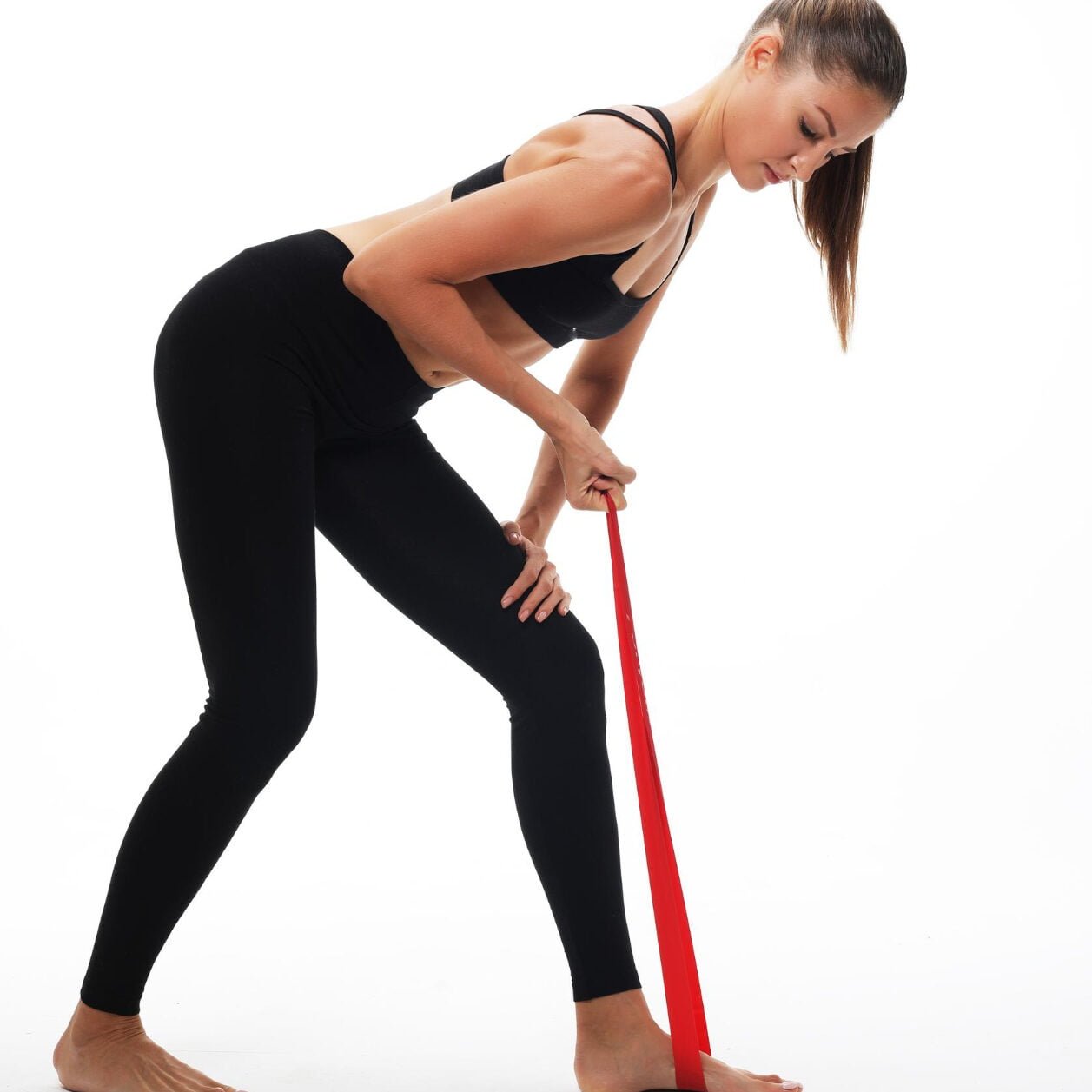
Maintain proper posture
Keep your back straight and shoulders relaxed while engaging in resistance band exercises. Stand or sit with your feet shoulder-width apart, distributing your weight evenly. Align your ears, shoulders, and hips to maintain proper spinal alignment.
Avoid arching or hunching your back during movements to reduce the risk of injury.
Focus on keeping a neutral spine and brace your core muscles for stability throughout each exercise. Ensure that you are not slouching or leaning forward excessively when performing shoulder exercises to prevent unnecessary strain on the neck and upper back.
Control the movement
Engage your core muscles and focus on controlling the resistance band throughout each exercise. Keep your movements deliberate and controlled to maximize muscle engagement and avoid any jerky or sudden motions that could lead to injury.
By maintaining control, you ensure that the targeted muscles are effectively worked without relying on momentum.
Focus on the eccentric (muscle lengthening) phase of each movement by resisting the pull of the resistance band. This will not only enhance muscle strength but also improve overall muscle control and stability.
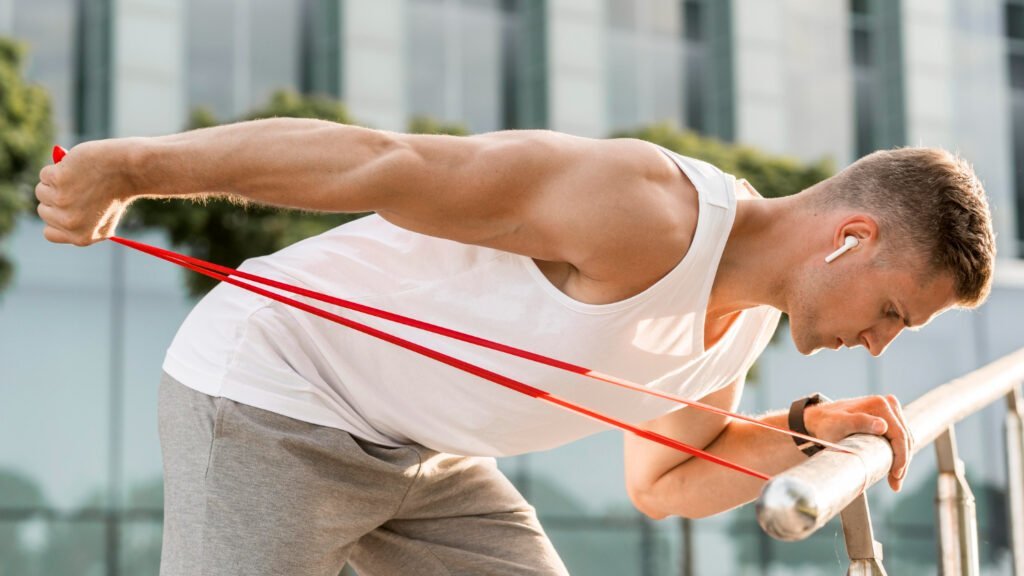
Adjust the resistance level
To effectively target the back and shoulder muscles, it’s crucial to adjust the resistance level of your resistance bands. Gradually increase or decrease the tension by using a different band or altering its position to ensure that each exercise challenges your muscles adequately.
You can easily modify the intensity by stepping closer to or further away from the anchor point, creating more or less tension in the band.
Once you have mastered correct form and technique, experiment with various resistance levels to find what works best for you. This will help you progress and continue building strength and endurance in your back and shoulders while preventing plateaus in your workouts.
Breathe properly
Inhale as you prepare to initiate the exercise and exhale during the exertion phase. This breathing pattern helps stabilize your core and maintain proper form while minimizing the risk of injury.
Avoid holding your breath, which can elevate blood pressure and reduce oxygen delivery to your muscles.
By coordinating your breath with each movement, you enhance muscle activation, boost endurance, and optimize overall performance. Engaging in controlled breathing also promotes relaxation throughout the workout, allowing you to focus on executing each exercise with precision and intention.
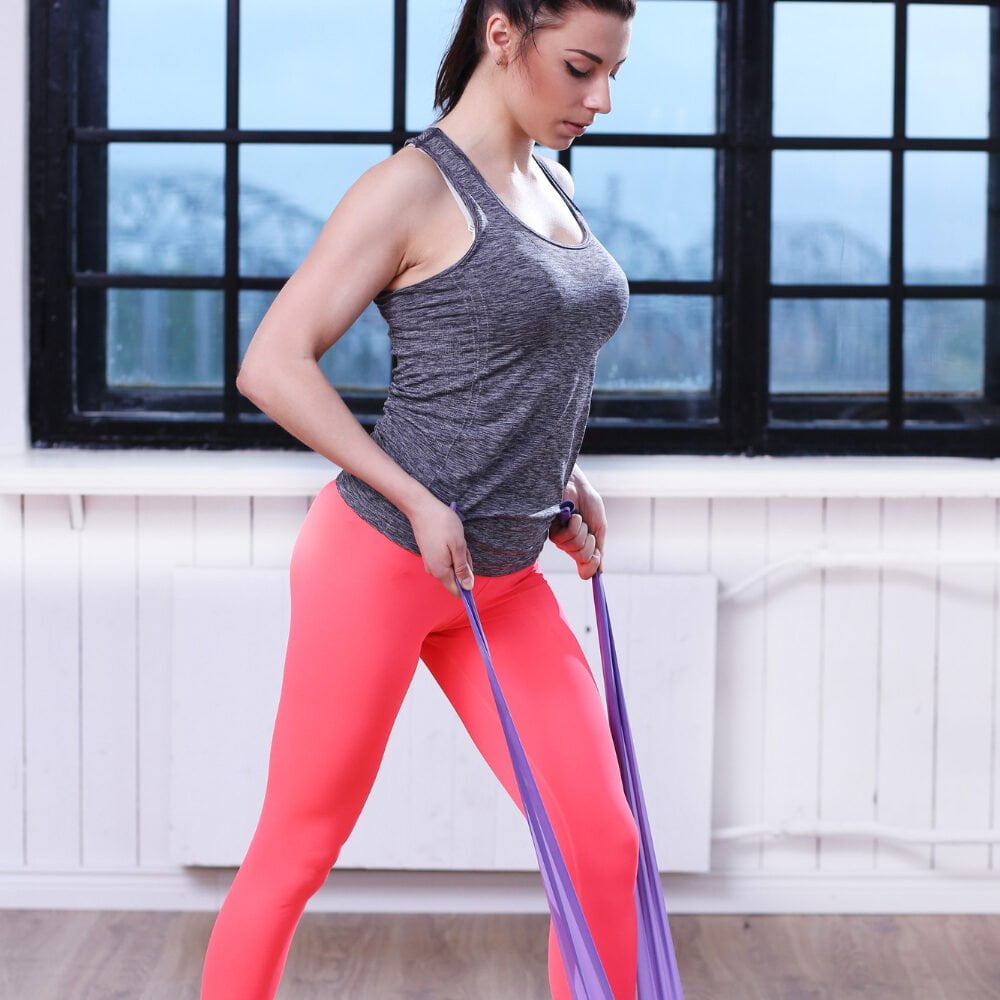
Sample Workout Routine
Complete this 10-15 rep workout routine using resistance bands for a strong and sculpted back and shoulders. Ready to get started? Click here to learn more!
10-15 reps of each exercise
Complete 10-15 reps for each exercise to target the back and shoulder muscles effectively. Adjust the resistance level according to your strength to ensure challenging but doable sets.
Maintain proper form throughout each repetition, controlling the movement with deliberate focus.
Engage in a consistent workout routine, aiming for 2-3 sets of each exercise. Take a brief 30-second rest between sets to allow your muscles enough recovery time without losing momentum during the workout session.
2-3 sets
Perform each exercise for 2-3 sets to effectively target your back and shoulders. This repetition will help build strength and endurance in these muscle groups, leading to improved posture and reduced risk of injury.
By incorporating multiple sets, you can ensure that the muscles are adequately stimulated for growth and development. Resting between sets allows for recovery and optimal performance during each set, maximizing the benefits of the resistance band exercises.
Include 2-3 sets of each exercise in your workout routine to challenge your muscles and promote overall upper body strength. This approach helps create a well-rounded training program that supports functional movement patterns and enhances muscular stability in the back and shoulder regions.
Rest for 30 seconds between sets
Rest for 30 seconds between sets to allow your muscles to recover and replenish energy. This short break helps prevent fatigue while maintaining the intensity of your workout.
During this rest period, focus on controlled breathing and staying hydrated. Use this time to mentally prepare for the next set, ensuring you are ready to perform each exercise with proper form and technique.
Incorporate into your current training program
Add these resistance band exercises to your current training program for a well-rounded upper body workout. By including these back and shoulder exercises, you can enhance strength, improve muscle definition, and boost overall performance.
Be sure to adjust the number of sets and repetitions according to your fitness level and goals.
Remember that consistency is key when it comes to seeing results in your training regimen. So stay committed and keep pushing yourself towards progress with these effective resistance band exercises for your back and shoulders.
Conclusion
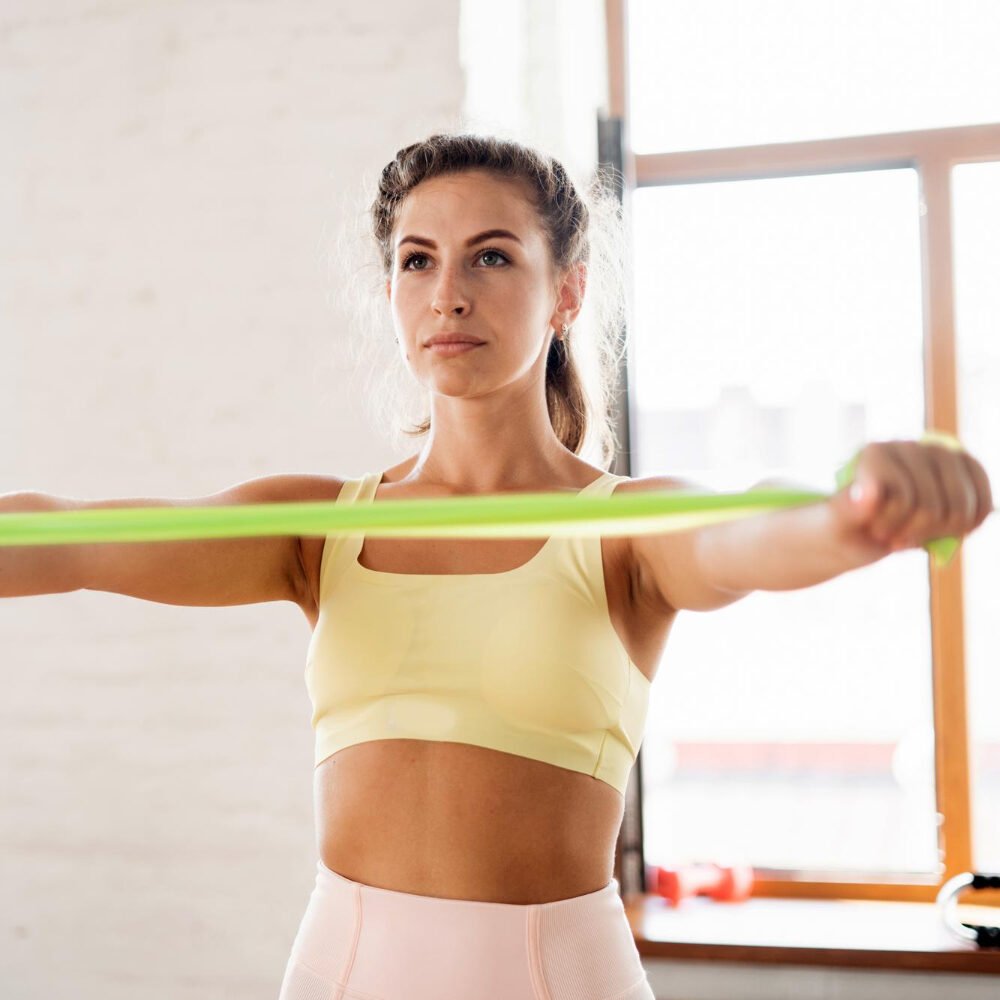
Incorporate these 10 effective back and shoulder exercises into your routine for a stronger, more toned upper body. Maximize the benefits of using resistance bands to achieve safe, low-impact workouts that can be easily modified to suit your individual needs.
With proper form and technique, followed by regular practice, you’ll soon notice improved strength and muscle definition in your back and shoulders. Elevate your training program by embracing the versatility and effectiveness of resistance band exercises today!
FAQs
Q: What are the benefits of using resistance bands for shoulder and back exercises?
A: Resistance bands provide variable resistance, which helps in strengthening the muscles, improving flexibility, and enhancing shoulder mobility. They also allow for a wide range of motion and can target specific muscle groups effectively.
Q: What are the best resistance band exercises for shoulders and back?
A: Some of the best exercises include overhead band pull-apart, resistance band shoulder presses, bent-over rows, lateral raises, and face pulls. These exercises target the shoulders and back muscles effectively.
Q: How do I perform an overhead band pull-apart exercise with a resistance band?
A: Hold the resistance band with both hands, loop it overhead, and then pull the band apart as far as possible, keeping tension in the band throughout. Slowly bring the band back to the starting position and repeat for the desired number of repetitions.
Q: What are some key tips for performing resistance band shoulder exercises?
A: It’s important to maintain proper form, keep your shoulders relaxed, and engage the core for stability. Additionally, controlling the movement and maintaining tension in the band throughout the exercise is crucial.
Q: How can resistance bands help in improving shoulder mobility?
A: Resistance bands allow for dynamic stretching and strengthening of the shoulder muscles, which can help improve range of motion, flexibility, and stability in the shoulder joints.
Q: What are some effective resistance band exercises for targeting the back muscles?
A: Resistance band rows, pull-downs, and reverse fly exercises are highly effective for targeting the muscles in the upper and lower back. These exercises help improve posture and strengthen the back muscles.
Q: Can resistance band exercises help in strengthening the rotator cuff muscles?
A: Yes, resistance band exercises can effectively strengthen the rotator cuff muscles, which play a crucial role in shoulder stability and injury prevention. Perform external and internal rotation exercises with a resistance band to target the rotator cuff muscles.
Q: What are some important precautions to consider when performing exercises with bands?
A: It’s important to choose the right resistance level for your fitness level, maintain proper form throughout the exercises, and avoid sudden jerky movements that can strain the muscles. Consulting a fitness professional can also help in designing a safe and effective resistance band workout routine.
Q: How can I incorporate resistance band exercises into a comprehensive shoulder workout routine?
A: You can include resistance band shoulder presses, lateral raises, external rotations, and front raises in your shoulder workout routine. These exercises effectively target the deltoid muscles and provide a well-rounded shoulder workout with the use of resistance bands.
Q: What are the advantages of using resistance bands for shoulder and back exercises compared to traditional gym equipment?
A: Resistance bands are portable, affordable, and versatile, allowing for a wide range of exercises targeting the shoulders and back. They also provide constant tension throughout the exercises, which is essential for muscle engagement and development.

Author
Years ago, the spark of my life’s passion ignited in my mind the moment I stepped into the local gym for the first time. The inaugural bead of perspiration, the initial endeavor, the very first surge of endorphins, and a sense of pride that washed over me post-workout marked the beginning of my deep-seated interest in strength sports, fitness, and sports nutrition. This very curiosity blossomed rapidly into a profound fascination, propelling me to earn a Master’s degree in Physical Education from the Academy of Physical Education in Krakow, followed by a Sports Manager diploma from the Jagiellonian University. My journey of growth led me to gain more specialized qualifications, such as being a certified personal trainer with a focus on sports dietetics, a lifeguard, and an instructor for wellness and corrective gymnastics. Theoretical knowledge paired seamlessly with practical experience, reinforcing my belief that the transformation of individuals under my guidance was also a reflection of my personal growth. This belief holds true even today. Each day, I strive to push the boundaries and explore new realms. These realms gently elevate me to greater heights. The unique combination of passion for my field and the continuous quest for growth fuels my drive to break new ground.





